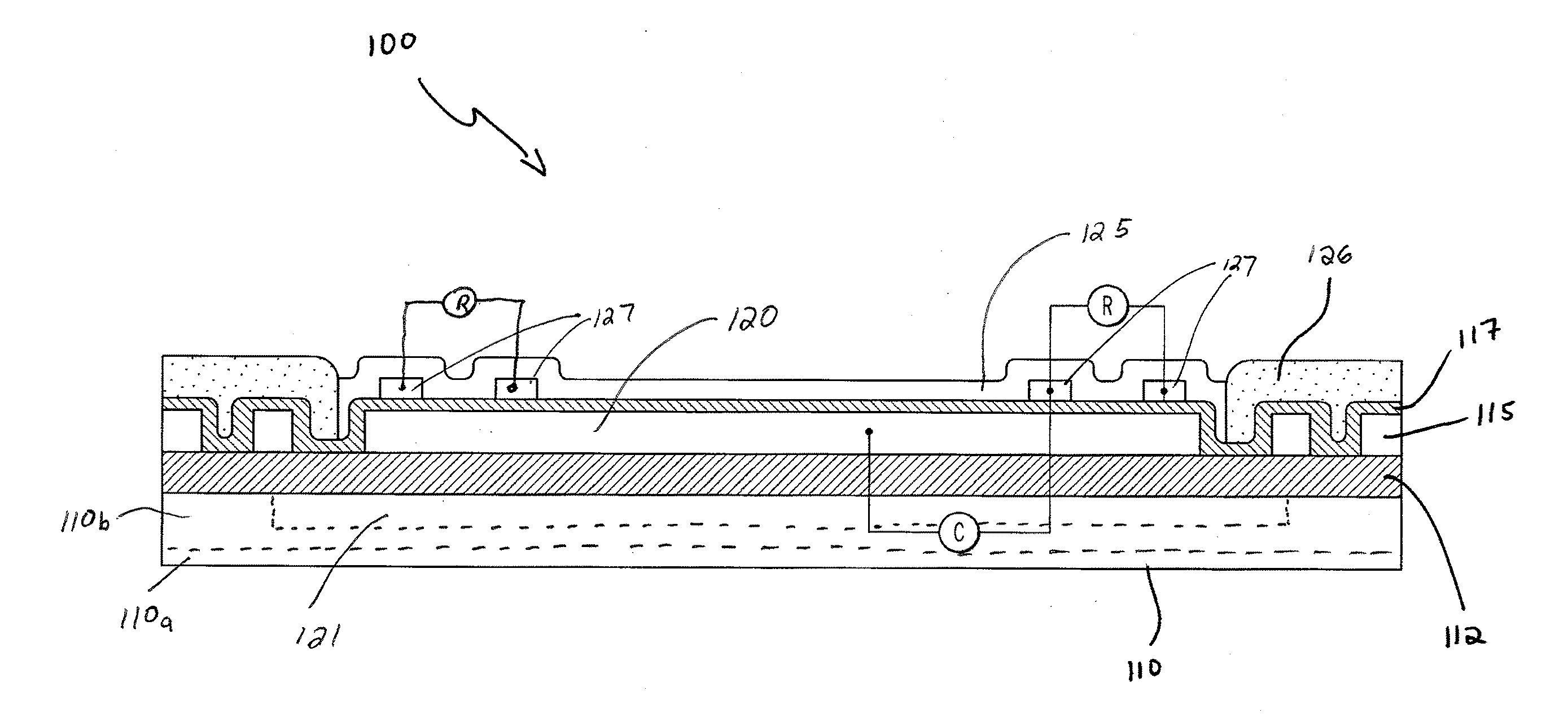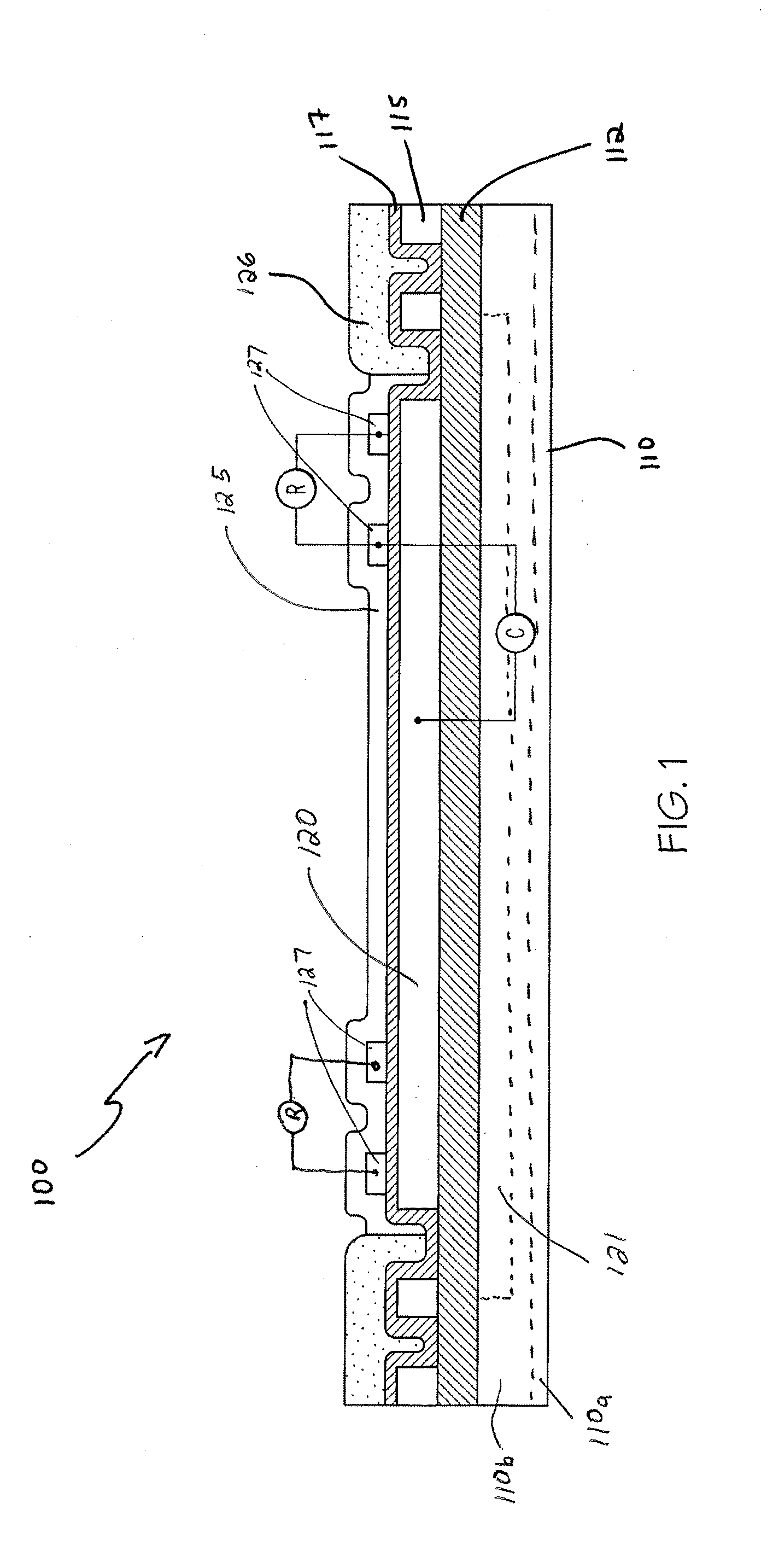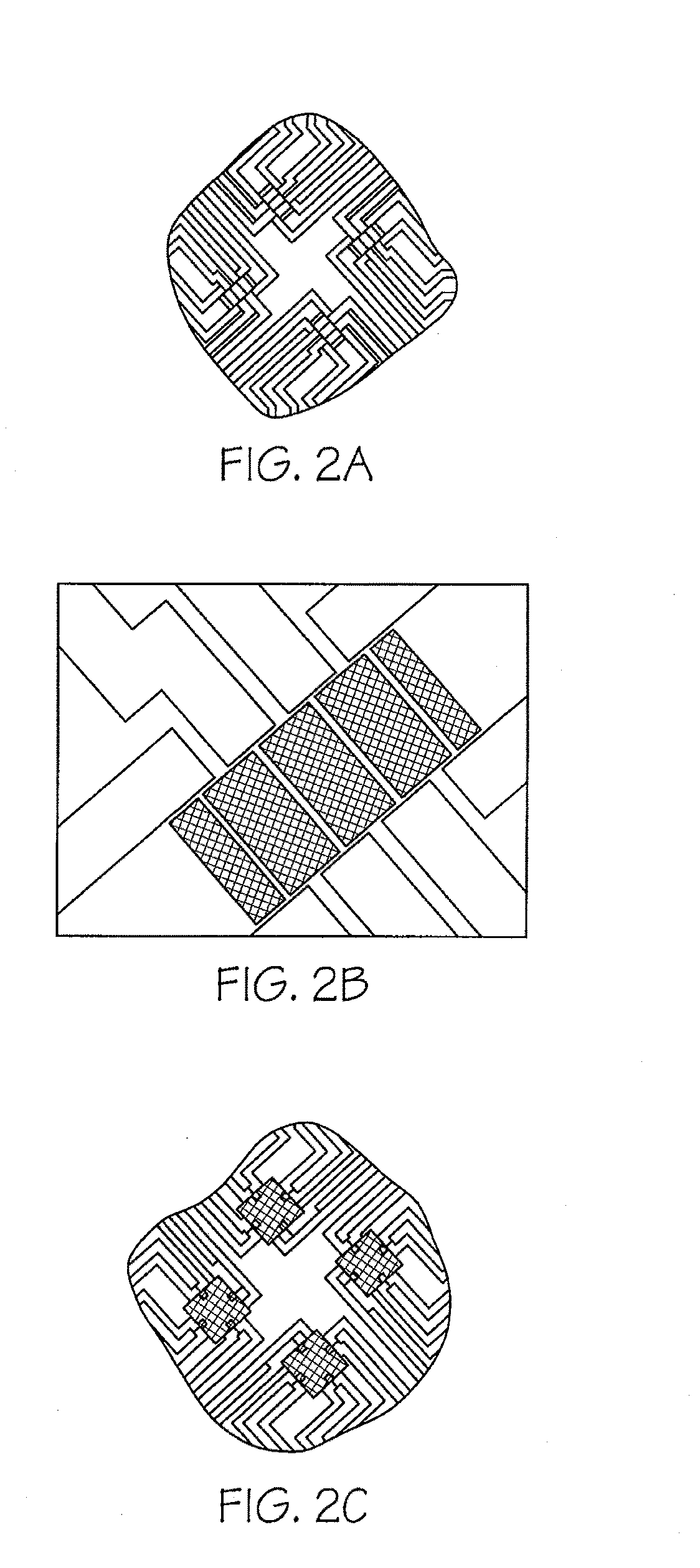Apparatus and Method for Microfabricated Multi-Dimensional Sensors and Sensing Systems
a multi-dimensional sensor and sensor technology, applied in the field of microfabricated devices, can solve the problems of not all devices can implement unique operating protocols and smart algorithms, not all sensors of the tcd or chemiresistor type have sufficient low power to work effectively, etc., to achieve low power, high production volume, and low power
- Summary
- Abstract
- Description
- Claims
- Application Information
AI Technical Summary
Benefits of technology
Problems solved by technology
Method used
Image
Examples
Embodiment Construction
[0066]Reference will now be made in detail to various embodiments which are illustrated in the accompanying drawings, wherein like numerals indicate similar elements throughout the views.
[0067]One embodiment of the present invention is the development of microfabricated sensors that can detect critical fluids, especially small molecule gases. Putting this technology into a low-cost MEMS package can add to the unique character of the resulting sensors. These MEMS sensors will be unique because of the combination of high-technological performance, tiny size, low power and low cost and the potential for long lifetime and exceptional stability (which is unique for chemical sensors and significantly increases the ability of these chemical sensors to be part of modern wired and wireless sensing systems).
[0068]Described below in varying embodiments are unobtrusive, small, lightweight and energy efficient monitoring devices combining communication equipment and various sensors for detection...
PUM
 Login to View More
Login to View More Abstract
Description
Claims
Application Information
 Login to View More
Login to View More - R&D
- Intellectual Property
- Life Sciences
- Materials
- Tech Scout
- Unparalleled Data Quality
- Higher Quality Content
- 60% Fewer Hallucinations
Browse by: Latest US Patents, China's latest patents, Technical Efficacy Thesaurus, Application Domain, Technology Topic, Popular Technical Reports.
© 2025 PatSnap. All rights reserved.Legal|Privacy policy|Modern Slavery Act Transparency Statement|Sitemap|About US| Contact US: help@patsnap.com



